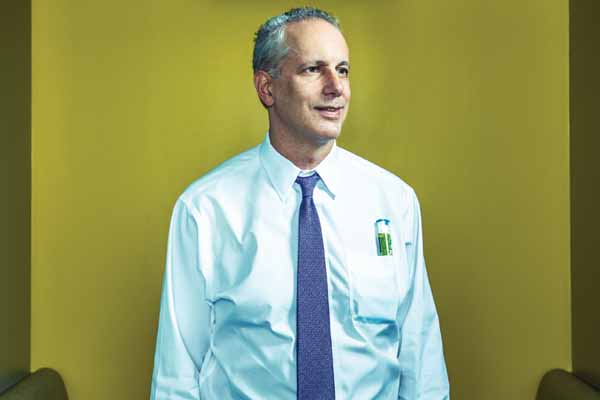
Ask Austin allergist Allen Lieberman, MD, which public health issue hasn’t received the attention it deserves, and his answer shouldn’t be a surprise.
“Eight percent of kids have a food allergy,” Dr. Lieberman, who founded Austin Family Allergy and Asthma in 2016, told Texas Medicine. “It’s literally a food-allergy epidemic right now.”
Indeed, the prevalence of food allergies in children has risen substantially recently – up 50% nationwide between 1997 and 2011, according to the Centers for Disease Control and Prevention.
“My daughter is 30, and when she was born there was minimal risk of peanut allergy. There weren’t a whole lot of kids with it,” Dr. Lieberman said. “Now I can see five or six patients a day with a peanut allergy. It’s not that we’re diagnosing it better, it really is a true rise in the incidence in all westernized countries. And there’s not a good reason why.”
That last sentence is part of what makes food allergies so dangerous, Dr. Lieberman says. Lacking a cure, prevention and building awareness are currently the only ways to keep kids with allergies safe.
“This wave of food allergies started hitting and caught us unprepared, and now everyone is playing catch up: the schools, the airlines, the restaurant industry,” said Dr. Lieberman. “It’s not parents being nervous or overprotective. It’s not that we’re over-testing or over-diagnosing these kids. It really is a public health problem.”
Here are more highlights from Texas Medicine’s interview.
What can be done to protect children with food allergies?
I think outreach is important ¬ educating schools. The problem is, there’s not really a uniform policy from top to bottom for a lot of these districts. Some schools have been really progressive and changed their rules and their guidelines, and they’re [making] strong efforts to keep kids safe. But other schools, it seems like they’re back in the ’80s: They’re still serving peanut butter sandwiches to the kids, and there are still snacks with food allergens in the classrooms. So it’s really trying to get all the districts on board.
What has changed over the years?
For the longest time, we did not have epinephrine in the schools, and a lot of schools did not have emergency care plans – they didn’t know what to do in the event a child had an emergency. So back in 2015, we did lobbying and got Senate Bill 66 passed. (The Texas Medical Association supported this bill.) That bill allowed schools to have what is generally called undesignated epinephrine. Before, parents would leave epinephrine at the school with their child’s name on it, and if another child was having a reaction the nurse was not allowed to use it on another child, otherwise they could lose their license.
Unfortunately, kids were dying in the nurse’s office. So, SB 66 allowed physicians to write epinephrine for the schools, but it also gave liability protection and allowed the schools to stock epinephrine in the nurse’s office. Sort of the way you have a fire extinguisher: It doesn’t have anyone’s name on it, but it’s there to use in case of emergency.
As part of an outreach effort, I work with local school districts including Round Rock schools to do training with their nurses once a year before school starts. We have all of their nurses together, and I do in-service training on anaphylaxis and use of epinephrine. There was a student last year who had a severe reaction at school, and the nurse knew exactly what to do right away: She gave him two doses of epinephrine, called EMS, and he survived.
What can physicians do to curb this rise?
It’s really about making an accurate diagnosis of these kids. Up to 2% of children have peanut allergies and up to 8% have food allergies, so really recognizing it as an epidemic [is key to stopping it]. Also, making sure caregivers and parents know how to use epinephrine. We really need to spend the time to show them the correct technique and demonstration on how to use it.
Are there specific things your practice does?
At our practice, we try to differentiate whether a person is at risk for anaphylaxis – meaning they eat the food, potentially they could die – versus those who have more of an intolerance. I also do a lot of advocacy with the families. We work with a local food-allergy support group, where we arrange meetings where parents can meet and network with each other so they can share their stories, share what works for them, what doesn’t work for them, problems they encounter. It’s a very rewarding part of what I do.
Tex Med. 2019;115(12):6-7
December 2019 Texas Medicine Contents
Texas Medicine Main Page